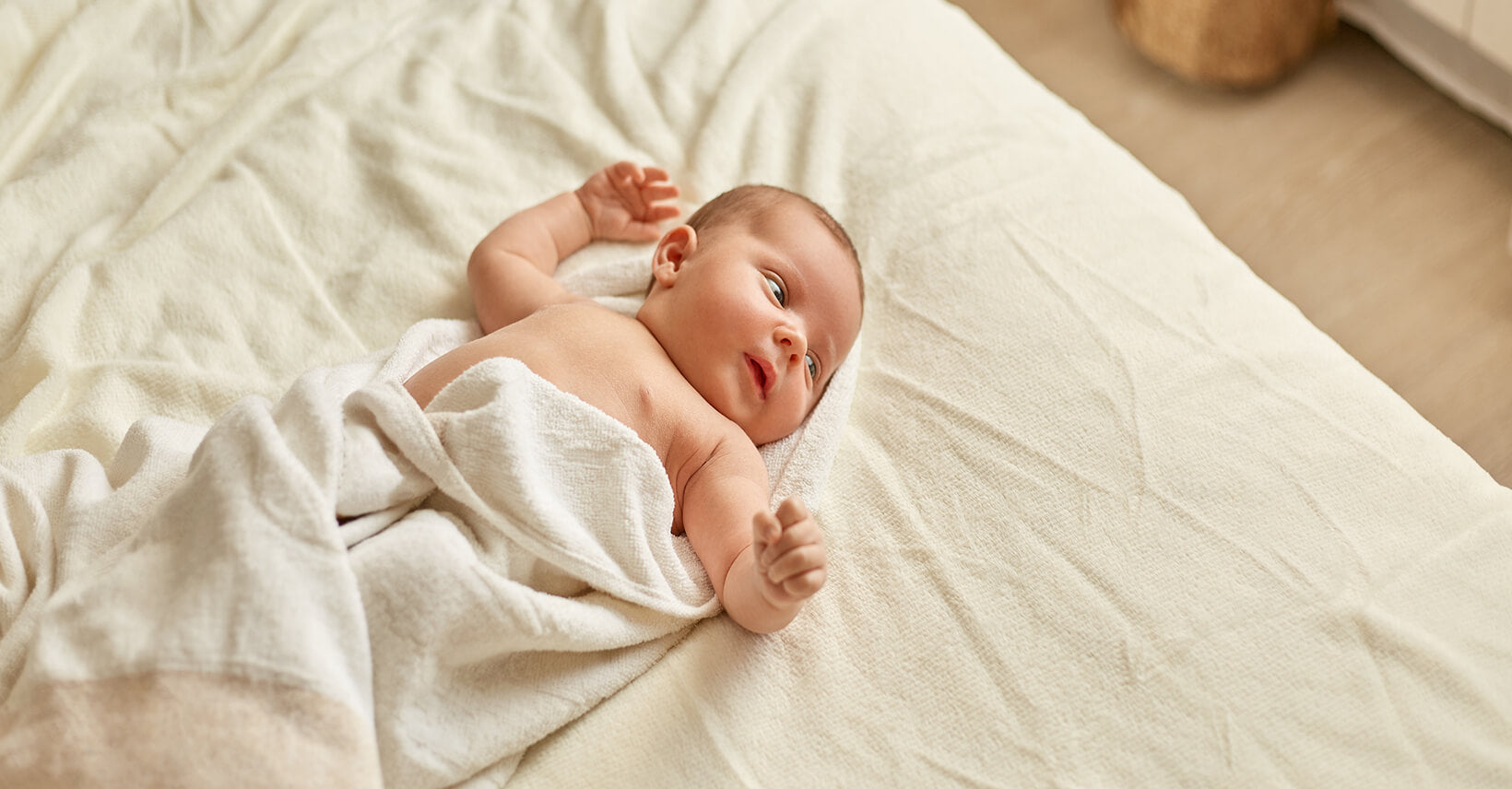


As a new mom, I know how hard it can be to see your little one uncomfortable. When my baby girl woke up in the middle of the night fussy and congested, my heart ached for her. I gently picked her up from her crib and rocked her in my arms, patting her back softly to try and ease her stuffy nose. Though I wished I could simply make her feel better with a wave of my hand, I knew the best thing I could do was research ways to help relieve her congestion and ensure she gets a good night's sleep. After consulting with her pediatrician and scouring online articles, I learned that having a baby sleep at an incline can help drain mucus and open up stuffed nasal passages. In this article, I will share the best sleeping positions to help relieve your baby's stuffy nose so we can all get some much-needed rest. As mothers, we will move mountains to ensure our children are comfortable - even if it means elevating the crib mattress at 3am!
Noisy breathing - You may hear rattling, wheezing, grunting, or whistling sounds when your baby breathes. This is caused by congestion in the nose and chest.
Difficulty feeding - Babies use their nose to breathe while breastfeeding or bottle feeding. Congestion can make it hard for them to eat properly.

Fussy or restless - Stuffy noses can be uncomfortable and make it difficult for babies to sleep. Yours may be irritable, crying more than usual, or having trouble settling down.
Low energy - Congestion can sap a baby's energy since they have to work harder to breathe. Your baby may seem more tired and sluggish when congested.
Discolored nasal discharge - Thick, yellow or greenish mucus is a sign of congestion. Normal discharge is clear.
Coughing or sneezing - Your baby's body tries to expel and drain the excess mucus through coughs and sneezes.
Fever - While not always present, a fever can sometimes accompany congestion or indicate an infection.
Rubbing nose - The sensation of congestion will often cause babies to rub or push on their nose.
If you notice any of these signs of congestion, try using saline drops and aspirating mucus with a bulb syringe. See your pediatrician if symptoms persist beyond a few days or worsen.
Here are some common reasons why babies frequently experience congestion.
Immature immune system - Babies have an immature immune system that is still developing, making them prone to viral infections that cause congestion.
Anatomy - Babies have small nasal passages that are easily blocked. The mucus membranes in their nose are also quite delicate.
Allergies - Allergies to things like dust mites, pet dander, or pollen can cause chronic congestion in babies.
Irritants - Cigarette smoke, air pollution, and other environmental irritants can inflame a baby's nasal passages.
Weather changes - Rapid changes in temperature and humidity can trigger stuffy noses.
Respiratory infections - Congestion often accompanies colds, flu, RSV, sinus infections, and ear infections which babies are susceptible to.
Lying down - Mucus pools in the back of the throat when babies lie down, leading to nasal stuffiness.
Milk allergies - Allergies to proteins in formula or breast milk can cause chronic congestion in some babies.
Teething - The extra mucus produced during teething can plug up a baby's nose.
Frequent congestion is frustrating but normal for most babies. Make sure to clean out mucus and use saline drops to keep passages clear. See a doctor if it persists beyond 10-14 days.
Here are some tips to help your baby sleep better with a stuffy nose.
Use a humidifier in baby's room at night. This adds moisture to the air, loosening mucus and reducing congestion. Just make sure to keep it clean to avoid mold.
Give a warm bath before bedtime. The steam will temporarily clear out nasal passages, making it easier for baby to breathe.
Do some gentle massage around the nose, cheeks, and forehead. This can temporarily relieve sinus pressure.
Suction the nose with a rubber bulb syringe to remove excess mucus before putting baby down. Be gentle and do just enough to open airways.
Elevate the head of the crib mattress by placing towels or a pillow underneath. This will use gravity to promote mucus drainage.
Use saline drops or spray before bed to thin out mucus. Tilt head back gently and apply to each nostril.
Keep bedroom cool and comfortable. Excess heat can worsen congestion.
Have baby sleep on their back or side instead of stomach. This prevents pooling of mucus in the nasal passages.
Use a cool mist vaporizer or humidifier near the crib to moisten the air.
Play calming music and avoid loud noises to help baby sleep.
Gently rubbing or massaging baby’s chest can loosen mucus before laying down.
Ask your pediatrician about safe decongestants if congestion persists more than a few days.
Providing comfort and clearing the nasal passages as much as possible before bedtime can help baby sleep more peacefully. Check with your doctor if symptoms worsen or other problems arise.

For a congested baby, the best sleep position is on their side or with their head elevated above their feet. Here are some recommendations for baby sleep positions when congested.
Side lying. Having the baby sleep on their side can help drainage and make it easier for congestion to clear. Place the baby on their side with their hips and knees bent in a fetal position.
Elevated head. Use extra pillows or wedges to elevate the head of the crib mattress so that the baby's head is higher than their feet. This can help reduce stuffiness.
Tummy time. Brief periods of tummy time while awake can help drainage when done carefully. Make sure an adult is present.
No back/stomach sleeping. It's generally recommended that babies sleep on their backs to reduce SIDS risk. When congested, avoid having them sleep on their back or stomach if possible.
Cool mist humidifier. Run a cool mist humidifier in the baby's room at night. This can add moisture to dry out congestion.
Clear nasal passages before bed. Use a bulb syringe or saline drops to help clear out stuffy noses before bedtime.
Consult your pediatrician if congestion is severe or long-lasting, or if you have any other concerns about your baby's breathing or sleep position. Proper positioning can help them feel more comfortable when under the weather.

It's generally not recommended to use pillows for babies. Extra pillows can pose a suffocation risk. Instead of a pillow, you can try using a thin blanket rolled up and placed under the sheet to gently elevate the head of the mattress. Always keep cribs and sleep surfaces pillow-free for safety. Consult your pediatrician if congestion persists or breathing is labored, as they may have additional suggestions tailored to your baby's specific needs.
In summary, side lying or elevating your baby's head slightly above their feet are generally the best sleep positions when they have a stuffy or congested nose. This allows for better drainage and makes breathing more comfortable. Use a thin rolled blanket, rather than pillows, under the sheet to prop up the mattress if elevating the head. Always monitor your baby and consult the doctor if congestion is severe or persistent. Following these positioning tips can help relieve baby's discomfort so they can get the rest they need to feel better. Be sure the sleep environment is safe and follow pediatrician advice tailored to your little one's individual needs.

Lily Hou
An expert in sleep sack design, is a valued contributor to Kaiya Baby's blog. With a strong background in baby sleep bags and maternal care, she is highly regarded for her professionalism. Lily prioritizes baby comfort and safety in her designs, using high-quality materials. Her insightful articles on sleep bags have been featured in reputable publications and have gained a significant readership. Trust Lily to help you create a comfortable and safe sleep environment for your baby, backed by her proven track record in the industry.
Leave a comment
This site is protected by hCaptcha and the hCaptcha Privacy Policy and Terms of Service apply.